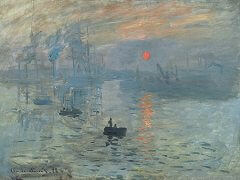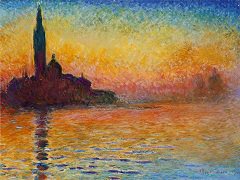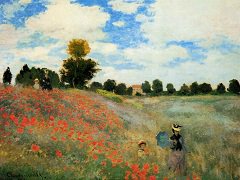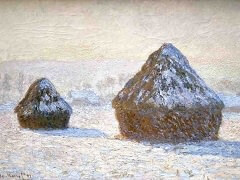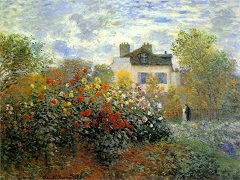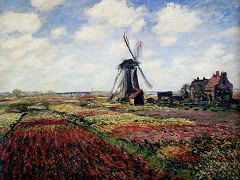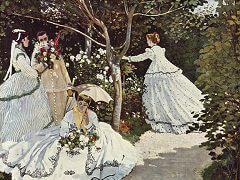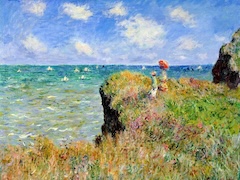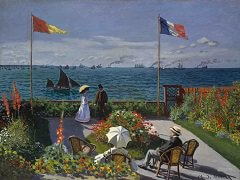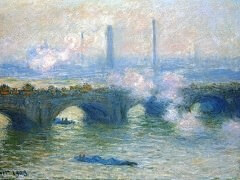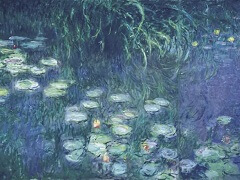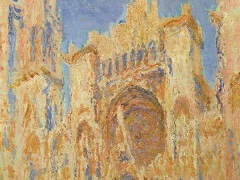La Pointe de la Hève at Low Tide, 1864, by Claude Monet

In 1864, when he was 23 years old, and still an art-student, Monet began painting La Pointe de la Hève at Low Tide. It was exhibited in the 1865 Paris Salon - the only place where an artist could make a reputation.
Monet needed to have a success so he painted a relatively conventional work. The subject-matter was traditional - a fisherman, peasants gathering seaweed. Not a hint of the modern world such as the steam ships that constantly passed this headland. For the beach, land and sky, Monet used darker tones - browns, greys, dull greens, blues and ochres. They contrast with the paler tones of the ocean, surf and clouds to create a powerful impression of the light that signals an impending storm.
This beautiful beach scene near Le Havre, where Claude Monet grew up, was one of two landscapes that launched Monet's career when exhibited in 1865 at the Paris Salon, the vast, well-attended survey of contemporary art sponsored by the French government. At the Salon, some viewers confused Monet's signature with that of the controversial Édouard Manet. When the older artist received compliments for a painting that he had not painted, he sought out Monet, initiating one of the richest dialogues ever between great painters. Monet came the closet of any artist to Manet's pictorial language in his seascapes, and he may even have influenced him to some degree. Manet owned or intervened in the sale of several of Monet's seascapes, actively and generously supporting his younger colleague during the difficult years of 1870s. He admired Monet's seascapes unreservedly and, according to Monet's friend Antonin Proust, called Monet "the Raphael of water".

